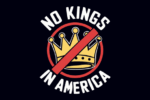You can provide proof of value in a number of ways…
Testimonials. (Legitimate ones only. You don’t want the Federal Trade Commission on your tail.)
Price of product or service as compared to its result. See my static testimonial in the upper right-hand corner of this website showing that a $220 sales piece paid for itself ten times over on the first day it appeared. I was dancing on the ceiling when I got this testimonial! I could never claim something like this without proof or the FTC would be on me in a hot minute–even though I probably could because I do the same (over time, not all in one day usually!) for other clients when I write ‘evergreen copy’ for them. You can’t claim anything you can’t prove either via client testimonials or some other way. (Sadly, most clients don’t let me know how well what I write for them converts. They aren’t required to. I just know they’re happy because they keep coming back. Maybe they think if they tell me how much money I make them I’ll start asking for a piece of the pie instead of flat rates. Who knows? Hey, I ought to look into that…)
Compare your product or service with its competition. Where does your product or service stand out?
Competing against a brand name? Talk savings! The big guns are paying big bucks to stay top-of-mind. Let your customers know you’re just as good or better and that they won’t be paying for gazillion dollar TV and radio ads in addition to what they’re buying.
Answer the unasked question, “Am I buying the best product or service at the best price?” Throw the spotlight on any aspect of your offering that allows your potential customer to answer, “Yes, I am.”
If you have two options for a product or service, decide whether to offer the most expensive one first. If you think “sticker shock” (the high price of the product or service) will throw your prospect for a loop, give them the higher price first. Then, when they’ve caught their breath, let them know that you have a less expensive option. When you work this way, they’ll feel “let off the hook” financially and less concerned about the lower price than they otherwise might.
If the price of your product or service isn’t going to be a huge surprise, consider offering the lower-priced option first, then let them know about the higher-priced option and what else they’ll get should they elect to go with it. By doing it this way, your prospect won’t think you’re just going for the big sale by putting it out there and hoping they grab it. Instead, they’ll consider you a consultant rather than a sales agent because you’ve mentioned both options, starting with the least expensive, and they’ll feel more confident that you’re letting them decide which option makes the most sense for their particular situation.







